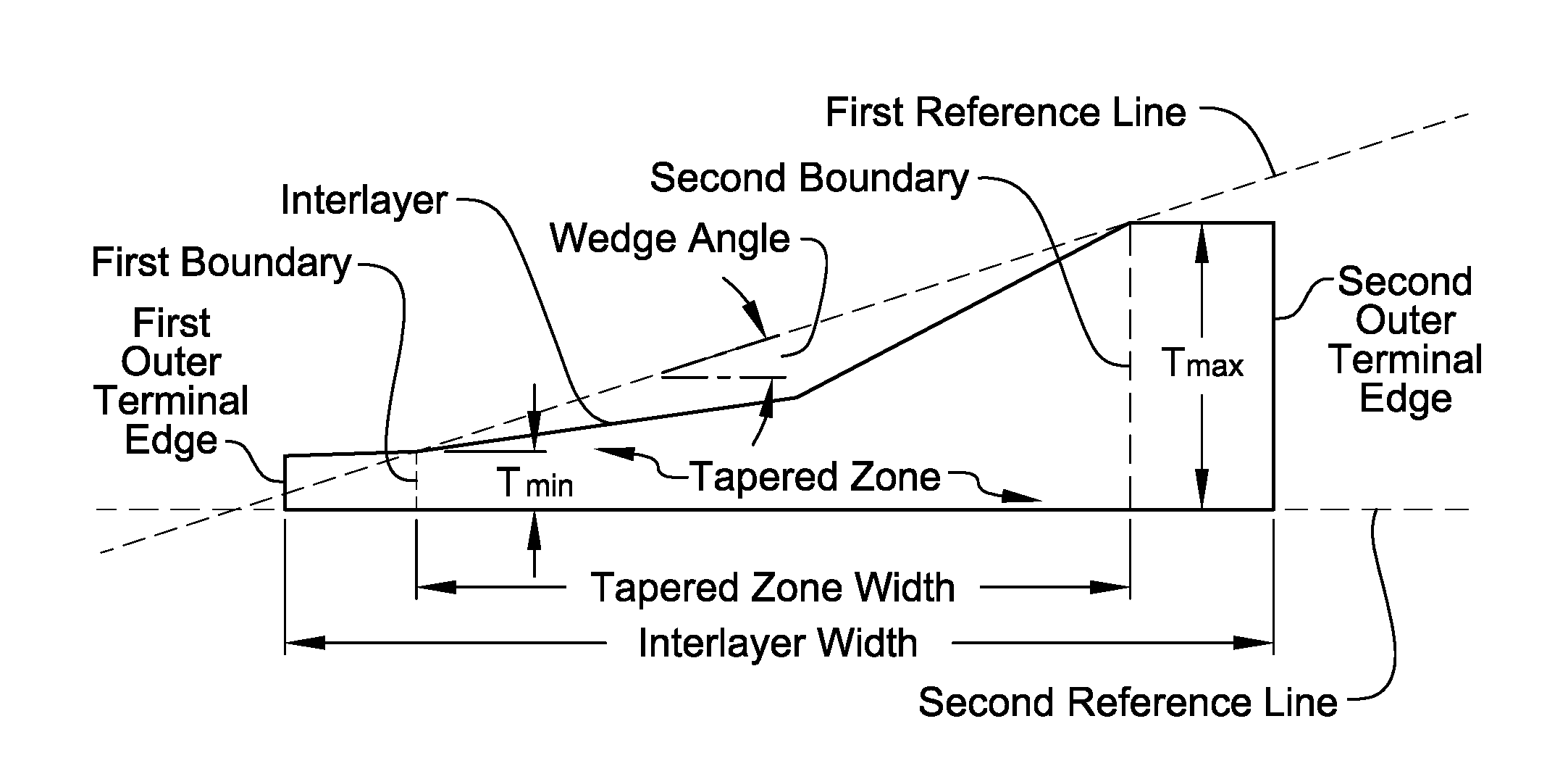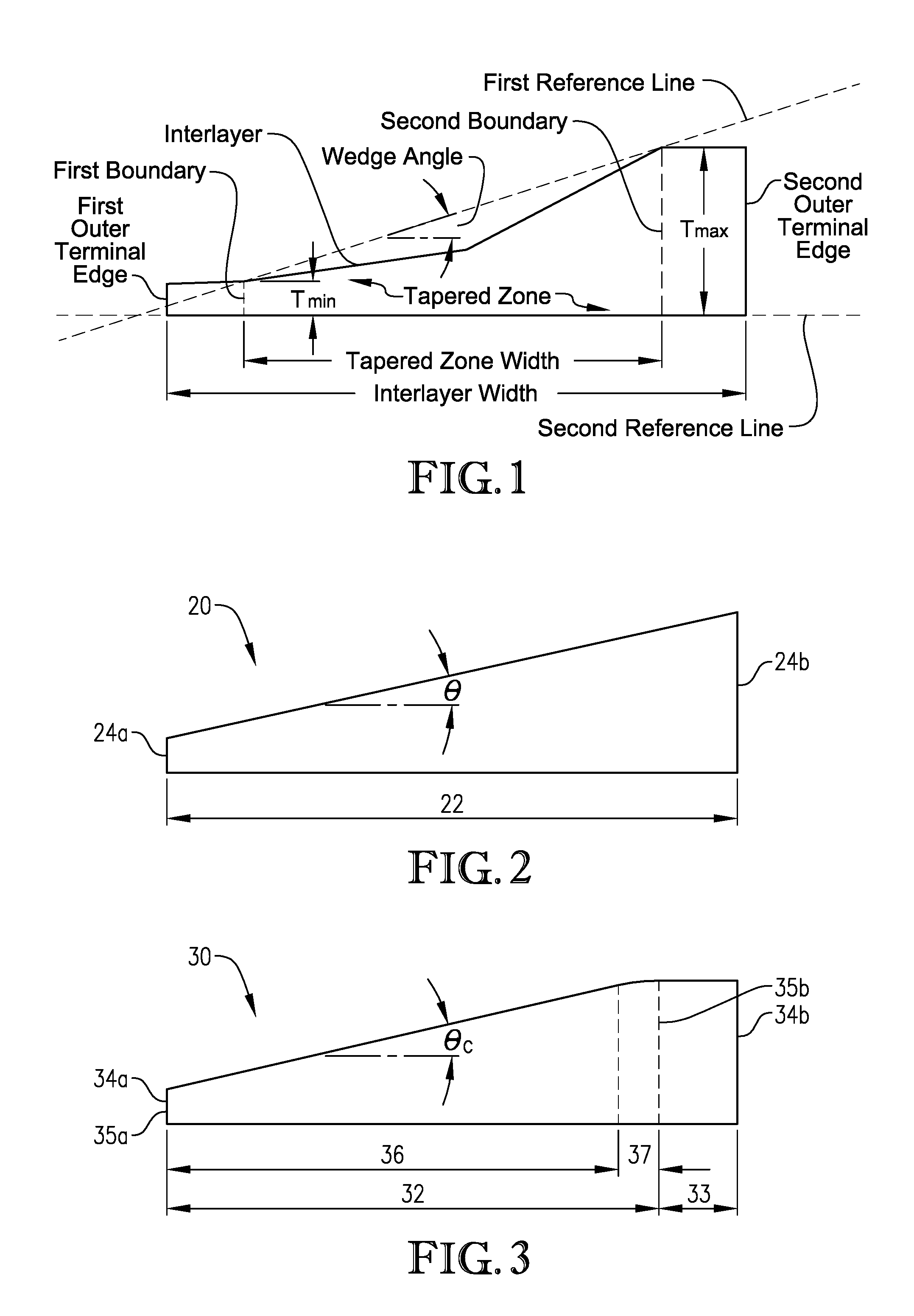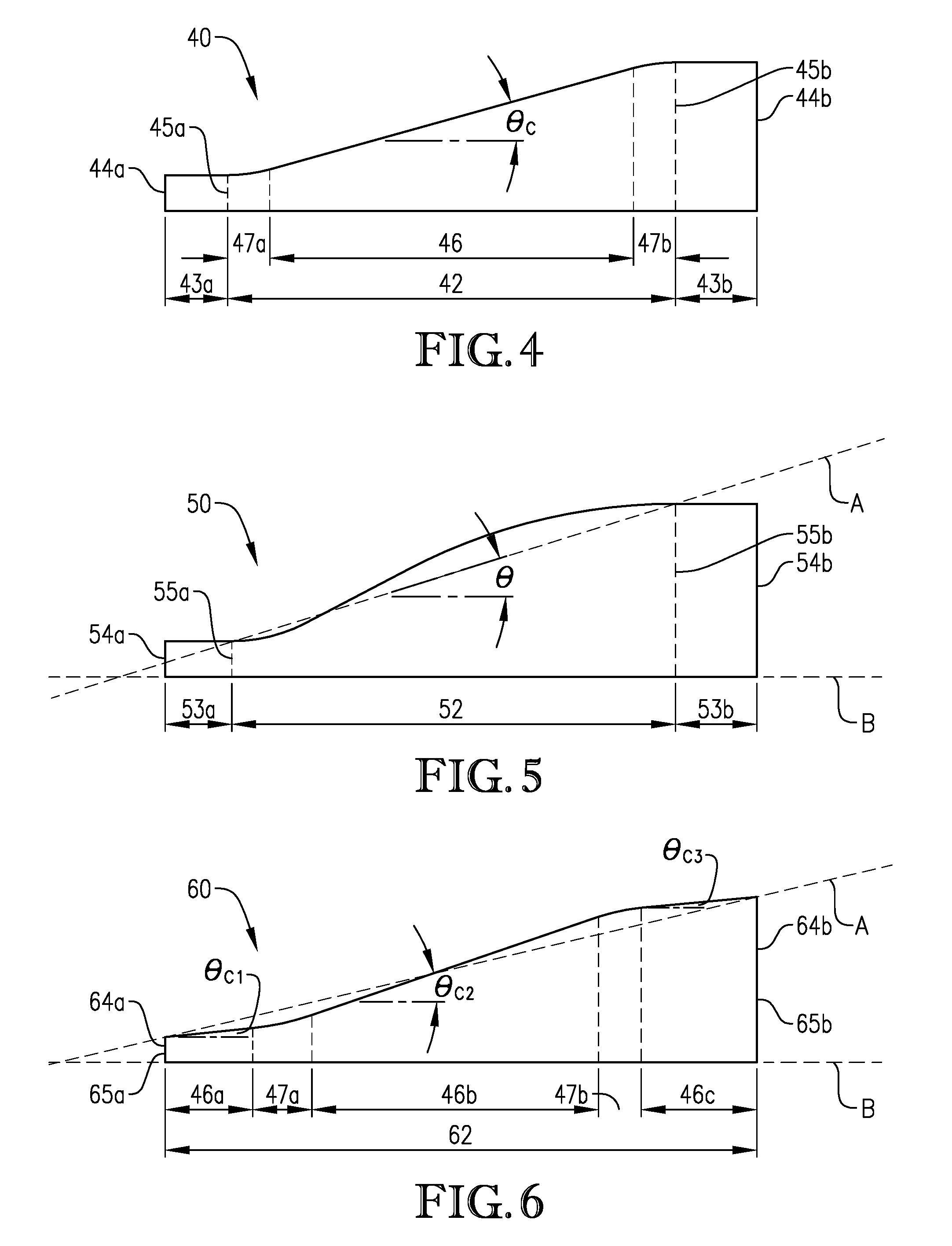Interlayers having enhanced optical properties
- Summary
- Abstract
- Description
- Claims
- Application Information
AI Technical Summary
Benefits of technology
Problems solved by technology
Method used
Image
Examples
example 1
Preparation of High Refractive Index Poly(vinyl acetal) Resins
[0150]Several comparative poly(vinyl acetal) resins, referred to as Comparative Resins CR-1 through CR-12 in Table 2 below, were prepared by acetalizing polyvinyl alcohol with one or more aldehydes including n-butyraldehyde (nBuCHO; RI=1.377), iso-butyraldehyde (iBuCHO; RI=1.374), and 2-ethylhexyl aldehyde (2EHCHO; RI=1.414). The composition of the resulting resins were measured using either the ASTM D1396 or FT-IR / SEC method described in detail previously. The refractive index and glass transition temperature (Tg) of several of the resins was also measured according to the methods described previously, and the results are provided in Table 2, below.
TABLE 2Properties of Several Comparative Poly(vinyl acetal) ResinsResidualResidualResidualResinResidualResidualPolyvinylPolyvinylPolyvinylRefractiveHydroxylAcetatenBuCHOiBuCHO2EHCHOIndexResin(wt %)(wt %)(wt %)(wt %)(wt %)(nD25)CR-121178——1.491CR-219180——1.490CR-319146—341.489C...
example 2
Preparation of High Refractive Index Resin Interlayers
[0153]Several Comparative and Disclosed Interlayers were formed by mixing and melt blending several of the Comparative Resins listed in Table 2 and several of the Disclosed Resins listed in Table 3 above, with varying amounts of the plasticizer triethylene glycol bis(2-ethylhexanoate) (3GEH). The composition, refractive index, and glass transition temperature of each of the resulting interlayers, referred to as Comparative Interlayers CL-1 through CL-14 and Disclosed Interlayers DL-1 through DL-26, were measured as described previously, and the results are respectively summarized in Tables 4 and 5, below.
TABLE 4Properties of Several Comparative InterlayersRefractiveInter-PlasticizerIndexTglayerResin(phr)(nD25)(° C.)CL-1CR-1341.47836CL-2CR-2381.47730CL-3CR-3381.47528CL-4CR-4501.47217CL-5CR-4301.47730CL-6CR-5751.4686CL-7CR-6751.4672CL-8CR-7751.464−4CL-9CR-8751.466−3CL-10CR-9751.465−3CL-11CR-10751.466−2CL-12CR-10501.4712CL-13CR-1175...
example 3
Preparation of Interlayers Using High Refractive Index Resins
[0155]Several of the Comparative and Disclosed Interlayers formed in Example 2 and respectively summarized in Tables 4 and 5, above, were used to create several Comparative and Disclosed Multilayer Interlayers. Each multilayer interlayer included a pair of outer “skin” layers, having a total thickness of 28 mils, sandwiching an inner “core” layer having a thickness of 5 mils, usually formed of a resin having a lower residual hydroxyl content. The composition and several properties of the interlayers including refractive index, glass transition temperature, mottle, and loss factor, were measured as described above, and the results for the Comparative Multilayer Interlayers (CI-1 to CI-16) and Disclosed Multilayer Interlayers (DI-1 to DI-29) are summarized in Tables 6 and 7, below.
TABLE 6Properties of Several Comparative Multilayer InterlayersΔRefractiveRefractiveIndexIndex ofLossInter-Polymer LayerTg (° C.)Refractive Index(...
PUM
| Property | Measurement | Unit |
|---|---|---|
| Temperature | aaaaa | aaaaa |
| Fraction | aaaaa | aaaaa |
| Percent by mass | aaaaa | aaaaa |
Abstract
Description
Claims
Application Information
 Login to View More
Login to View More - Generate Ideas
- Intellectual Property
- Life Sciences
- Materials
- Tech Scout
- Unparalleled Data Quality
- Higher Quality Content
- 60% Fewer Hallucinations
Browse by: Latest US Patents, China's latest patents, Technical Efficacy Thesaurus, Application Domain, Technology Topic, Popular Technical Reports.
© 2025 PatSnap. All rights reserved.Legal|Privacy policy|Modern Slavery Act Transparency Statement|Sitemap|About US| Contact US: help@patsnap.com



